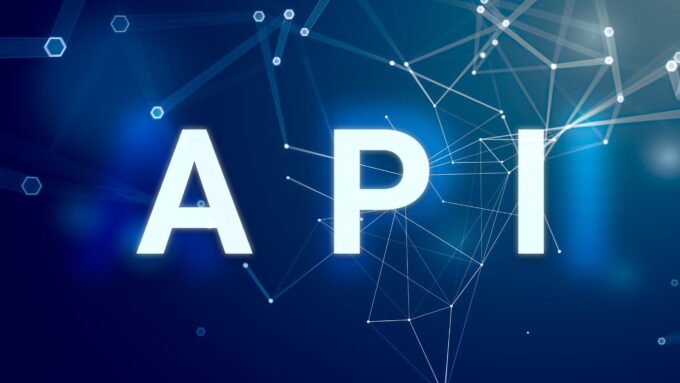When choosing a live streaming SDK & API provider, it is a good idea to ensure it offers technical support. The best way to do so would be to check out providers’ reviews to learn how they respond to customer problems. APIs work by using commands known as “calls.” Short for Application Programming Interfaces, they facilitate communication between different software systems. They define rules and protocols for requesting and exchanging data, allowing applications to interact and share information seamlessly. APIs enable developers to access functionalities and services provided by other applications, promoting integration and interoperability.
Typically, these calls are snippets of code you can add to your website and apps. These code snippets utilize the API’s defined methods and parameters to make specific requests and retrieve desired data. By integrating these calls into your website or application, you can leverage the functionality and services provided by the API, enhancing the capabilities and user experience of your software. These are the reasons why you need a live streamable API for your business.
Speed

Streaming APIs make it possible to build customized solutions that leverage the capabilities of various live-streaming platforms and programs. This gives businesses the freedom to innovate with streaming technologies and processes.
For example, a sports broadcaster that uses a live streaming API can integrate chatbots, audience polls, and side-group video calls into their broadcasts, allowing fans to interact in real-time. This can also help improve engagement and app retention.
Additionally, a video streaming API integrated with a content delivery network (CDN) will ensure fast loading times for viewers worldwide, regardless of location or device. This is necessary for a world-class viewing experience, as viewers don’t want to wait longer than necessary for the video to load.
A live streaming API that can be easily integrated with existing systems and workflows eliminates the need for a costly migration and minimizes disruption to operations. This is especially important for companies that use legacy hardware, such as video cameras and recording software. It’s also helpful for organizations that need to maintain a high level of service without disrupting existing customers.
Security

Streaming APIs are tools that integrate programs and platforms. As such, they offer the freedom to add functionalities that best meet your needs. This can include the ability to customize the streaming experience, such as adjusting video quality to fit your viewers’ Internet connection speeds and bandwidth constraints.
For example, many live streaming SDK & API providers now provide adaptive bitrate streaming that automatically adjusts the video quality to the highest available for users with poor or inconsistent internet connections. This avoids pushing configuration complexity back onto end users and ensures the highest possible quality for all viewers.
A good live streaming API provider will also offer a secure environment that prevents cyber-attacks and data breaches. This is particularly important for companies handling sensitive information and customer data.
Scalability
An outstanding live streaming API can handle many viewers without slowing down or affecting the quality of the video. This scalability allows a business to reach an increasing audience without expensive infrastructure or additional resources.
It’s also necessary for businesses to stream live video at high resolutions and on multiple platforms. An API that supports these platforms is vital for businesses that want to broadcast live videos online and promote them on social media.
Live stream APIs allow for automation and integration, which reduce the oversight required by technical employees and speed up workflow processes. This can lead to improved efficiencies and increased revenue. It can also help prevent downtime from unexpected events, such as DDOS attacks or system overload. An advanced API that supports RTMP and SRT, the same protocols used by the largest video streaming platforms, can also help eliminate costly delays in video delivery and ensure a consistent experience for your audience.
Integration

A live streaming API can integrate seamlessly into existing systems without disrupting your workflows or forcing you to invest in new hardware. This can reduce costs and ensure your technology always performs at its peak to deliver the best possible user experience.
Live streaming is a powerful tool for promoting products and services. It allows businesses to build a relationship with their audience in real time and increase engagement by responding directly to questions and feedback. Additionally, live video streaming can be used to broadcast product announcements and news updates, which can build anticipation for upcoming releases and boost conversions.
Using a live streaming API to deploy linear and on-demand video across multiple touchpoints is easy, but choosing a support provider is important. A good vendor will provide responsive customer support via email, phone, and live chat to help your team get up and running quickly with minimal downtime. They should also have a searchable knowledge base that makes troubleshooting any issues fast and simple.
Flexibility
A live streaming API allows you to integrate and develop apps and web platforms that work for your business. This will enable you to build custom tools to assist your enterprise’s technological systems and reduce overhead costs.
It also means you can automate your mundane tasks, reducing workflow oversight and friction. This helps you dispatch video content more quickly to meet consumer expectations without needing a large technical staff.
You can even take it a step further and use your live-streaming API to create an interactive experience for your audience. Examples include live stream chat and side group video calls for watch parties. These features help increase engagement and app retention rates.
If you want to maximize your video streaming capabilities, choosing a professional broadcasting platform with robust video API coverage is important.
Summary

Live streaming is no longer an optional feature; businesses must take full advantage of it by integrating a live API into their website. Not only can this help increase visibility for your business, but it also allows you to provide real-time customer support and services. With so many options available today, there’s no excuse not to make the most out of the opportunities that come along. Get started now and reap the benefits before anyone else catches on.









